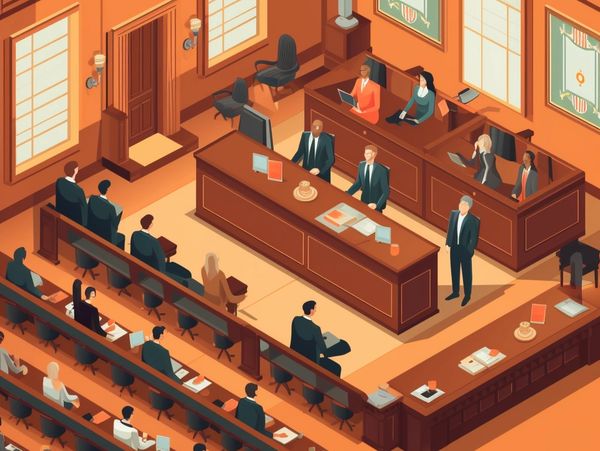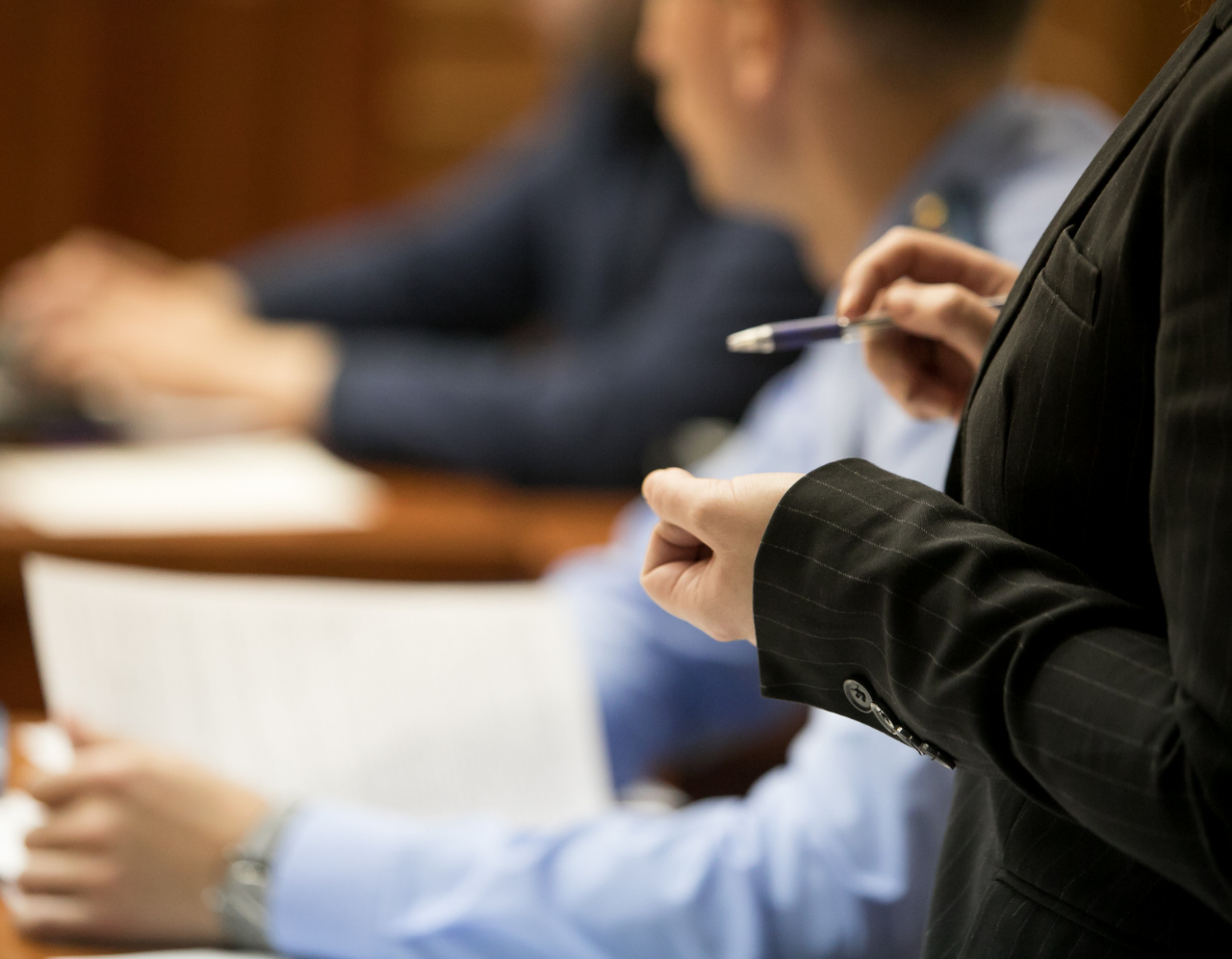Browsing Facility Instances: Just How to Create Reliable Trial Presentations for Optimum Outcomes
Browsing Facility Instances: Just How to Create Reliable Trial Presentations for Optimum Outcomes
Blog Article
Browsing the Complexities of Test Presentations: Tips for Seamless Shipment and Compelling Debates
In the world of legal process, the art of test presentation stands as an important component of success. As lawyers navigate the detailed web of courtroom characteristics, the ability to flawlessly provide arguments and proof while captivating the court's attention comes to be critical. The intricacies intrinsic in trial discussions require a fragile equilibrium of technique, skill, and skill. By honing strategies that ensure a refined distribution and crafting compelling debates that resonate with the audience, lawful professionals can substantially boost their advocacy. In a world where persuasion preponderates, mastering the complexities of test discussions is not merely a choice yet a necessity for those seeking to prevail in the court room.

Recognizing Trial Goals
To properly navigate a trial, it is vital to have a clear understanding of the objectives that need to be accomplished. Prior to stepping into the court, lawful groups must define their objectives and wanted outcomes. These objectives work as assisting concepts throughout the trial, shaping techniques and affecting decision-making procedures.
Recognizing trial objectives includes a detailed evaluation of the instance, lawful precedents, and the client's best rate of interests. Trial Presentations. It needs a careful exam of the realities, identifying key issues, and expecting prospective difficulties. By setting certain and quantifiable objectives, lawyers can customize their presentations and arguments to align with the desired results
Moreover, a clear grasp of test purposes makes it possible for lawful groups to focus on evidence, witnesses, and legal arguments effectively. It allows for the growth of a systematic story that reverberates with the discretionary, strengthening the total instance discussion.

Organizing Proof Properly
Having a clear understanding of trial objectives lays the structure for arranging proof successfully in legal procedures - Trial Presentations. By lining up the presentation of evidence with the wanted end results of the test, legal teams can strengthen their debates and boost their persuasiveness. One vital element of organizing evidence is classification. Organizing evidence based on motifs or importance to certain legal elements can aid enhance the presentation and make complex details a lot more digestible for the judge or court.
An additional crucial element in arranging evidence properly is establishing a logical circulation. Presenting proof in a coherent and consecutive way can aid develop an engaging narrative that sustains the legal debates being made. Furthermore, making use of visual help such as graphes, graphs, or timelines can further boost the organization of proof and assist in clearing up intricate connections or series of events.
Moreover, making certain that all evidence offered is pertinent and admissible to the situation is crucial. Inadmissible or unnecessary evidence can diminish the stamina of the debate and potentially hurt the reputation of the presenting celebration. Consequently, a precise evaluation and option procedure should be carried out to consist of just one of the most lawfully sound and impactful proof in the test discussion.
Crafting Persuasive Narratives
Crafting engaging narratives plays a pivotal duty in providing persuasive debates throughout legal process. When building a narrative for a test presentation, it is important to establish a clear story that highlights essential factors and links them in a coherent fashion. By weaving together proof, statement, and legal disagreements right into a influential and cohesive story, legal specialists can successfully advocate for look at these guys their customers and increase the probability of a beneficial end result in the court.
Understanding Visual Help
Effective use visual aids is vital to improving the influence and clarity of test discussions. Visual help, when utilized tactically, have the power to streamline complex info, reinforce essential factors, and leave a lasting perception on the court and jury. To grasp aesthetic help in trial discussions, it is critical to guarantee that they are clear, succinct, and pertinent to the arguments being made.
When integrating aesthetic help, such as charts, timelines, graphs, or photos, right into a test discussion, it is necessary to keep them visually appealing yet expert. The visuals need to complement the verbal arguments, offering a graph of the details directory being discussed without overwhelming the audience with unnecessary details.
Furthermore, exercising with the visual aids in advance is imperative to ensure a seamless delivery during the trial. Familiarizing oneself with the content, transitions, and timings of each visual help can aid keep the circulation of the discussion and protect against technological problems that might develop.
Providing Impactful Closing Disagreements
A compelling closing debate serves as the end result of a trial presentation, enveloping the core narrative and encouraging the judge and court towards a favorable choice. Begin by outlining the major disagreements that support your customer's position, stressing why the evidence offered throughout the trial sustains your narrative.
Additionally, including sob story can additionally enhance your closing argument. By humanizing the instance and attaching on a personal degree with the decision-makers, you can evoke empathy and understanding, affecting their understanding of the realities offered. Additionally, reiterating the legal criteria that must be fulfilled for a beneficial judgment can enhance the validity of your setting. Inevitably, a well-crafted closing argument must leave a lasting perception, engaging the court and jury that site to rule in your client's support.
Verdict
In verdict, mastering trial presentations includes comprehending purposes, arranging proof, crafting stories, making use of aesthetic help, and delivering impactful closing arguments. By executing these techniques successfully, attorneys can offer their instance flawlessly and make engaging debates in the court room. It is critical to browse the intricacies of test discussions with accuracy and skill to accomplish success in legal proceedings.
By aligning the presentation of proof with the wanted end results of the test, legal teams can strengthen their arguments and boost their persuasiveness (Trial Presentations). To understand aesthetic aids in trial presentations, it is crucial to ensure that they are clear, succinct, and appropriate to the disagreements being made
A compelling closing argument offers as the conclusion of a trial presentation, enveloping the core story and convincing the judge and court towards a beneficial choice. Begin by laying out the primary arguments that sustain your customer's setting, emphasizing why the proof provided throughout the trial sustains your narrative.In verdict, grasping trial discussions includes understanding purposes, organizing evidence, crafting stories, utilizing aesthetic aids, and supplying impactful closing disagreements.
Report this page